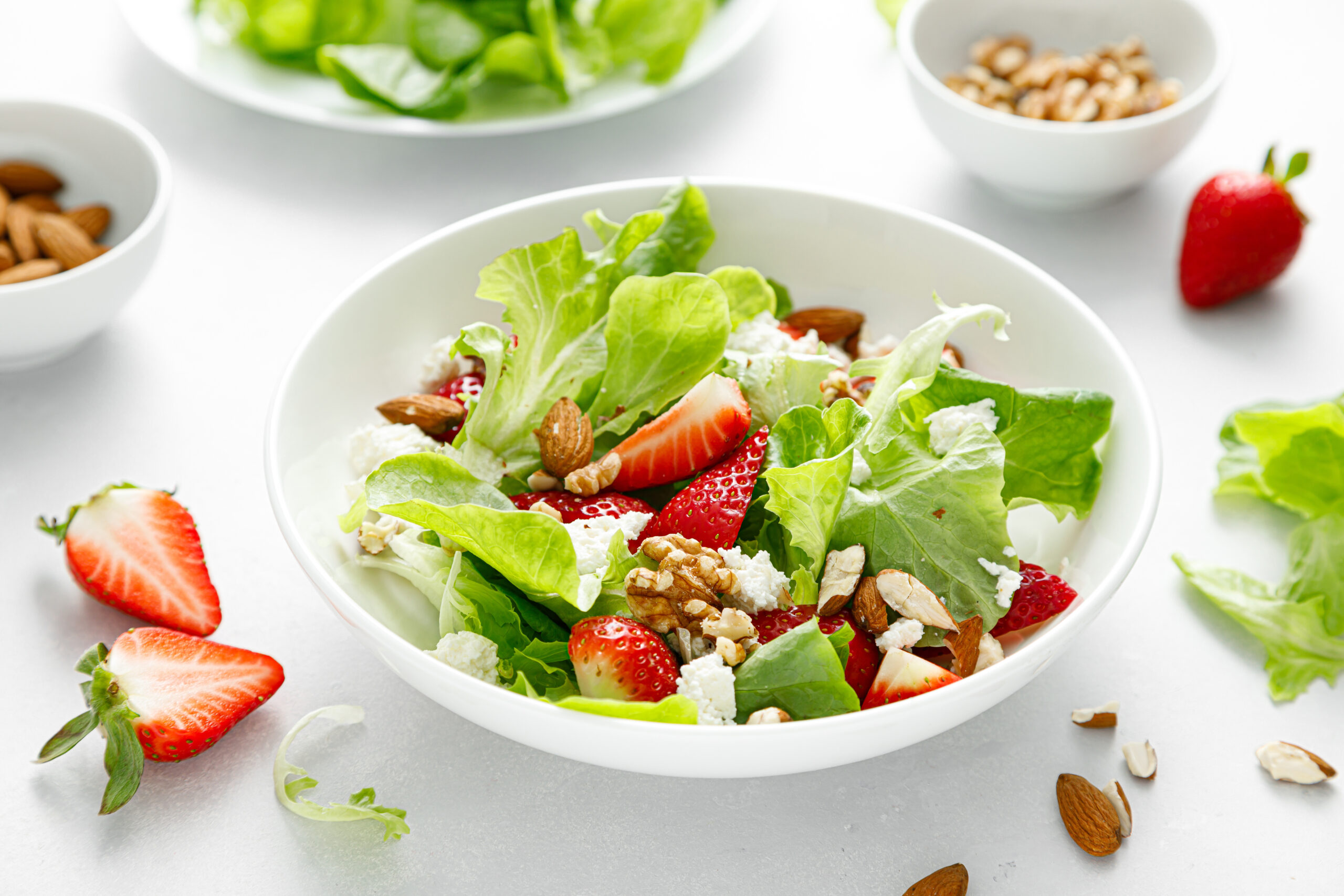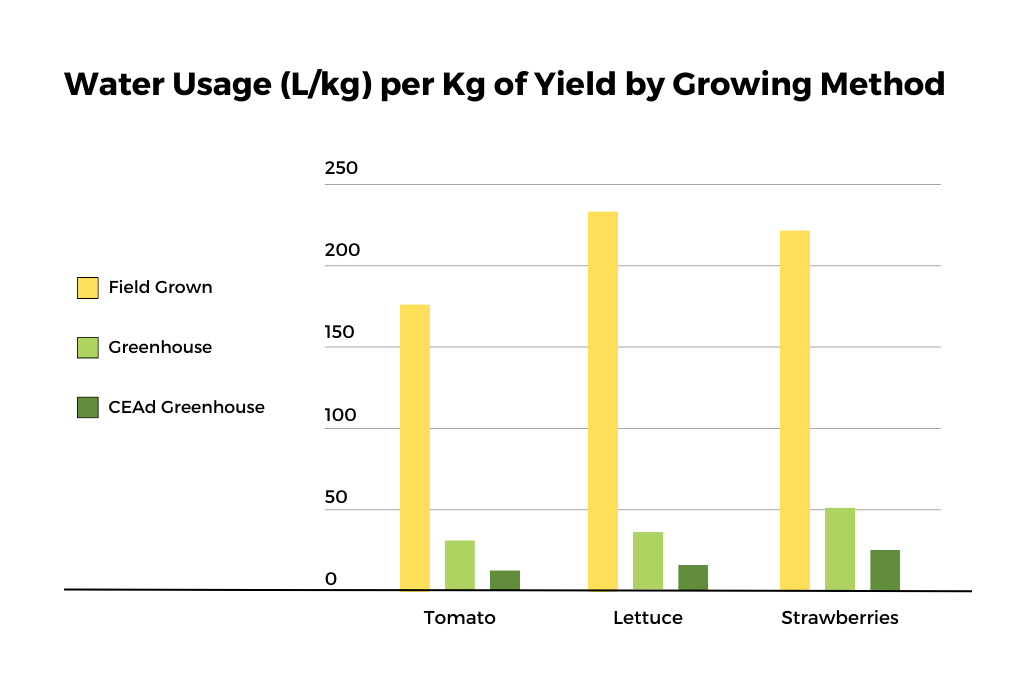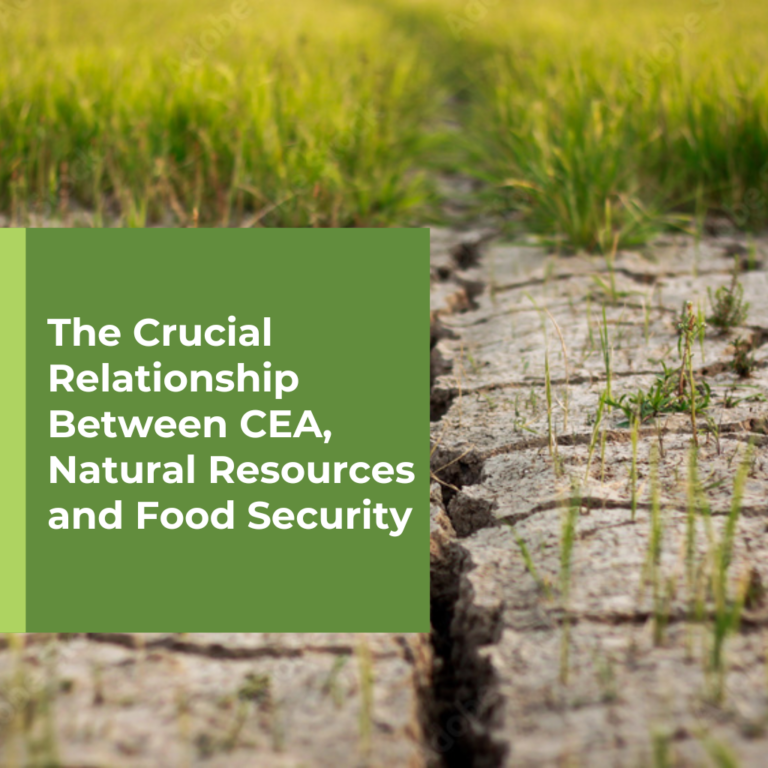
What's In Your Salad?
Controlled Environment Agriculture's Contributions to Water Sustainability and Business Improvement
Vegetables and Fruits: Nutrition, Communities, and Water Usage
Fruits and vegetables play a fundamental role in the overall nutrition of individuals across the globe. Their inherent nutritional profiles, health advantages, and cultural significance make them indispensable in fostering well-being and mental health. The importance of fruits and vegetables extends to the improvement of lifelong health outcomes and the strengthening of the resilience and vitality of communities. The United Nations’ designation of 2021 as the International Year of Fruits and Vegetables was meant to highlight the key function of these food categories in enhancing both human and environmental health (United Nations, 2022).
But despite their essential role in supporting communities, cultivating fruits and vegetables threatens water sustainability in several ways. Overall, these types of crops (often exported to other regions) require a lot of water, which can worsen shortages in areas with limited water or inefficient irrigation, leading to overuse of groundwater and surface water, and depleting local supplies. Expanding fruit and vegetable farming can also mean eliminating wetlands and other types of areas that protect water quality, while large-scale farming of a single crop – known as monoculture farming – can lead to soil erosion and runoff carrying pollutants into clean water sources.
What’s in Your Salad?
To highlight the connections between nutrition, communities, and water usage let’s focus on a staple dish common to many cultures and groups: the salad. To analyze a salad through an agricultural perspective it is necessary to break it down into ingredients. Three typical yet important crops that are commonly used in salads are tomatoes, lettuce, and strawberries; all of which have contributed to irrigation practices that have negatively impacted the areas they are grown in due to intense cultivation. These salad ingredients are popular, making them key players in monoculture farming practices that jeopardize water supplies in the communities they are grown in (Food and Agriculture Organization, of the United Nations, 2023).
Solutions and Controlled Environment Agriculture
As an industry, Controlled Environment Agriculture (CEA) is a central player in ensuring the consistent accessibility, quality, and sustainability of vegetables and fruits among other integral elements of a nutritionally balanced diet. Through its innovative handling of concerns relating to different weathers and geographies, resource optimization, CEA both promotes the health and welfare of communities and propels economic viability and environmental equilibrium while also supporting climate change adaptation.
In regard to water usage, CEA presents a strong and evidence-based opportunity for enhancing sustainability in farming. Through the use of advanced technologies and meticulous management of growing conditions, CEA systems have the potential to substantially decrease the amount of water needed, reduce unnecessary water loss, and support a more sustainable and adaptable food production system.
Specifically pertaining to the crops mentioned in this article – tomatoes, lettuce, and strawberries – CEA provides amazing improvements when it comes to water usage and in comparison to more traditional methods of growing. Below, is a table comparing how many litres of water per kilogram of yield (L/kg) are required to cultivate these crops through three different methods- Field grown, in a standard greenhouse, or through controlled environment agriculture. The data pertaining to field grown and standard greenhouse methods is an average obtained through different data points pertaining to production in North America. The controlled environment agriculture data is from clients growing in greenhouses designed by our firm CEAd spanning a period of ten years (labeled as ‘CEAd Greenhouse’) along with our extensive industry knowledge going back 35+ years.
Note: CEAd greenhouses are differentiated from “standard” greenhouses through advanced, proprietary design which optimizes yield per unit of energy along with water input, including water recovered from evapotranspiration.
The chart below visually highlights the difference between water usages per kilogram by yield and by growing method:

Business Efficiency and Sustainability
The cost of water for agricultural producers varies significantly and is based on factors like location, water source, irrigation methods, and type of crop; with rates ranging from less than a cent to several cents per litre (with strong variances based on local currency). Other significant factors that influence these costs are regional disparities in water availability, local policies, the efficiency of irrigation systems, diverse water needs for different crops, government subsidies, irrigation infrastructure presence, and water-related regulations. To determine the precise cost per litre of water for a specific agricultural operation, a thorough assessment of these factors within their specific context must be performed based on the geographical location of the grow facility (Organisation for Economic Co-Operation and Development, 2010).
Regardless of the specific cost per litre of water, the three building blocks of a salad mentioned earlier – tomatoes, lettuce, and strawberries – can further highlight the potential savings generated by controlled environment agriculture. Below is data pertaining to a 6-ounce (oz) salad containing 3 oz of lettuce, 2 oz of tomato, and 1 oz of strawberries. Specifically, how many litres of water are required to produce the amounts needed for an average-sized salad:
The infographic below visually highlights the amount of water required to produce a 6 oz salad through field-grown, standard greenhouse, and CEAd greenhouse environments.
Conclusion
The data presented above shows that a salad with fruits and vegetables grown through controlled environment agriculture requires on average 92% less water than a salad with field grown fruits and vegetables, and 48% less water than a salad with fruits and vegetables grown in a standard greenhouse. The direct relationship water usage has to environmental sustainability, along with the financial efficiencies that come from saving vast amounts of water, place controlled environment agriculture as a clear vehicle to a sustainable and innovative business model. However, the data also indicates that contemporary greenhouse design creates another layer of substantial benefit. Through creative and interdisciplinary applications of science, engineering, and quality management principles, controlled environment agriculture is an all-around answer to ethical and profitable development.
Learn more about CEAd, our vision, and our commitment to improving the quality of life for all.
References
Agricultural Water Pricing: United States. (1991). Organisation for Economic Co-Operation and Development. Retrieved September 19, 2023.
https://www.oecd.org/unitedstates/45016437.pdf
Crop Information | Land & Water | Food and Agriculture Organization of the United Nations | Land & Water | Food and Agriculture Organization of the United Nations. (n.d.). https://www.fao.org/land-water/databases-and-software/crop-information/en/
Secretary-General’s message for the closing of the International Year of Fruits and Vegetables | United Nations Secretary-General. (2022, February 24). https://www.un.org/sg/en/content/sg/statement/2022-02-24/secretary-generals-message-for-the-closing-of-the-international-year-of-fruits-and-vegetables



